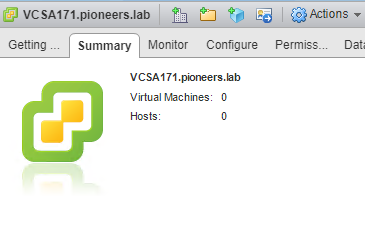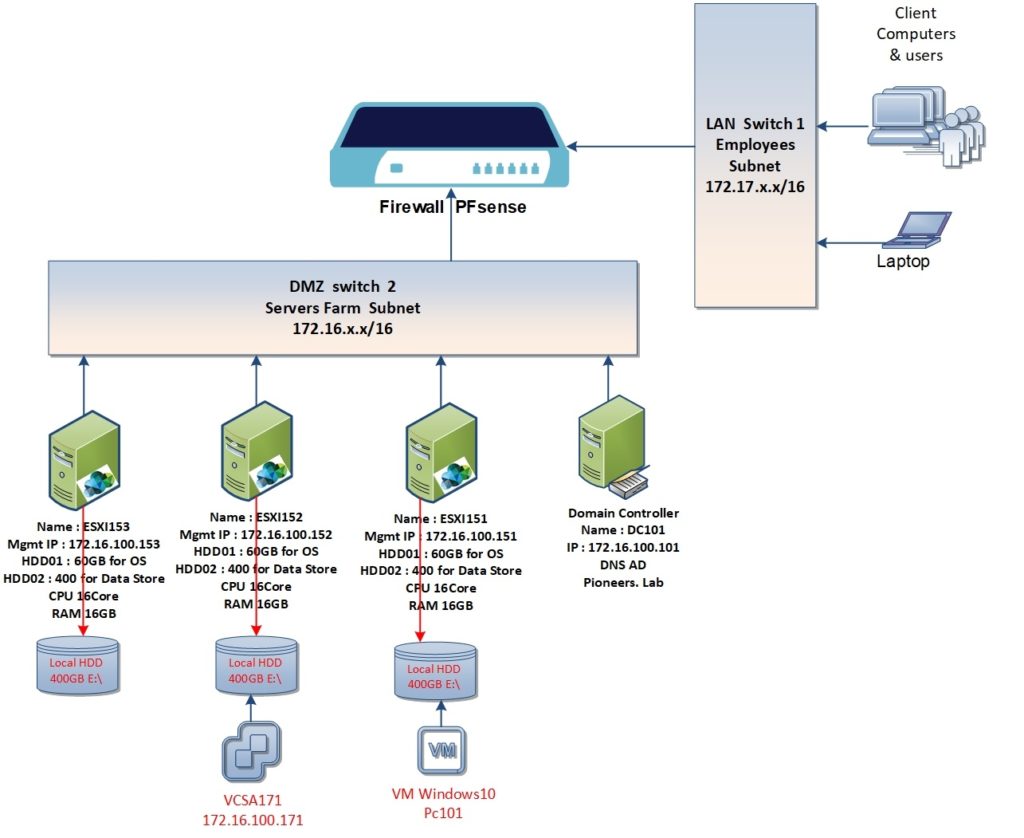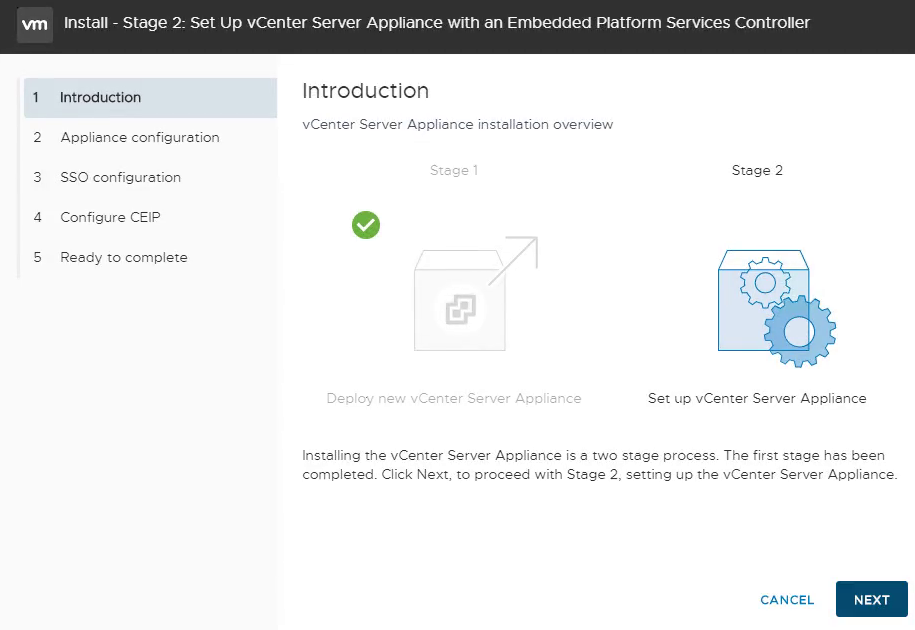introduction
in previous article : we have got some brief intro about vCenter
and we differentiate between [basic installation] VS [best practice deployment ]
in this article we will start installation vCenter 6.7 as VCSA
it’s good idea to look at network diagram below
we have 3 ESXI servers as the following
- ESX151 with IP 172.16.100.151
- ESX152 with IP 172.16.100.152
- ESX153 with IP 172.16.100.153
each server has the following:
- HDD 60 GB for OS ,
- HDD 400 GB for Datastore
- 2 CPU x 8 core = 16 core
- 16 GB RAM
- 8 NIC : first NIC assigned for management , and the other remain for advanced usage like [vMotion , ISCSI Adapter , vSAN , VM traffic …etc]
ESXI151 currently has VM installed in Datastore called [Windows10 VM ]
so …. we will install vcenter on ESXI152 and call it VCSA171
VCSA installation requirements
hardware requirements for Tiny environment (up to 10 hosts or 100 virtual machines) :
- 2 CPU
- 10GB RAM
- 300GB Storage
second step is to : register VCSA171 in DNS with IP address 172.16.100.171
and the third step is to open the oprt between LAN and server farm at network firewall : which PFsense
for update list of port please check vmware site here
now let us to check requirements before start installation
VCSA installation steps
now insert VCSA installation DVD in you computer and open it to start VCSA installation as VM operating system
configure vCenter Application
in previous section we have seen ho to install VCSA as VM operating system
now we will continue to configure VCSA171 as vcenter application
Verify VCSA installation
VCSA171 has been installed as VM operating system
and configured also as as vcenter application
in networks pioneers always we recommend to verify any installation process : and VCSA installation is NOT an exception .
we can verify installation with many methods
fore example to verify VCSA171 is installation as VM > open https://ESXI152 and check VMs i installed
also we can access VCSA as VM it self
just we would like to bring your attention to the following:
- VCSA as VM is accessed by https://VCSA171:5480 and manged by account [ root ] like any linux operating system
- VCSA as vcenter application is access by https://VCSA171:443 and managed by administrator@vsphere.local , this domain has been created during configuring vcenter application and used only to configure vcenter as application NOT as VM
- later we can manage vcenter application by using administrator@pioneers.lab , when we discuss domain identity
now open https://VCSA171:5480
also we can access vcenter application by URL https://VCSA171:443
then provide credential
administrator@vsphere.local
conclusion
in this article we have discuss how to install VCSA as VM operating system , and how to configure it as vcenter application
then we verify our installation process
this is very important article ,
and highly recommend to practice it many time until to make sure you have fully understand its concepts
next article we will discuss post VCSA installation : what is the early steps we should tp perform in order to manage vSphere environment effectively





































